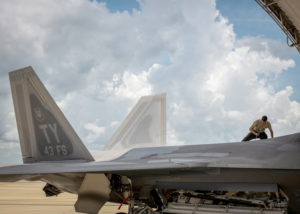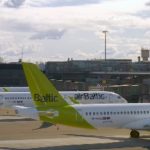Evolving engineering solutions to encompass safety, security and trust are critical if we are to solve issues of congestion, carbon emission reduction and still be able to travel long distances.

Dr William Conley, CTO of Mercury Systems, is tasked with “watching the trends” for the company, which provides computing systems and a variety of different platforms across the aerospace and defence market. The company’s products range from advanced micro electronics to digital processing, largely used for radar electronic warfare, ISR applications and mission computing used for avionics and displays.
Dr Conley said there were a couple of trends he had identified across the sectors in particular how commercial technology was being used and adopted within the aerospace and defence market. “The market has changed from more of a transition in as opposed to a transition out from the defense ecosystem. And the second trend is really around autonomy safety and trust, and how those future systems, are going to be able to go ahead and operate in the ways that we really desire more in the future.”
One of the sectors showing the most advances within the commercial sector is urban air mobility (UAM). Dr Conley said the innovations would ultimately require a huge behavioural shift from human beings who have spent the vast majority of history, living on the surface of the earth to better utilisation of our skies.
Autonomous operation will be built on trust
Dr Conley said the move from pilot-controlled towards autonomous vehicles would also involve an acceptance and trust that, in some circumstances, machines can perform tasks better than humans who had typically always been the controllers. He gave the example of computers which were able to play chess and other games, beating the efforts of their human counterparts.
He added: “For each of those applications the computer is now actually capable of doing better in a digital way than a human can actually go ahead and do. I think we’re kind of at a tipping point in that exact same way for where we are broadly with this autonomous concept in terms of vehicles and urban air mobility. But in that is a lot of other things, how do we bring in the same, how do we have trust in that and how do we realize that vision is going to be a really exciting future?”
Dr Conley said that the change would happen in stages with an initial “blended” solution of human and autonomous pilot. He said engineering solutions would have to be created around operator and passenger reassurance. “It really comes down to how do we think about safety, how do we think about trust and how do we think about security,” he said.
Transparency, third party verification and predictability will be key
“And so when we think about wanting to make a system safe, that tends to mean that we really are designing a completely open system. We want third-party verification about how something is going to work and an open code depository that everyone can go ahead and look at.”
A focus on safety and security combined with third-party reviews and system protections are needed to enable the sector to reach its full potential. Dr Conley concluded: “Ultimately, what I think we really are after as humans is we want to trust the system is going to do what we expect, when we expect it to and behave in a predictable way. And so how do we go ahead and test to ensure that we’re getting the trust, and the confidence in that system is going to be different than kind of the traditional way of doing a test where everything is distributed around the Gaussian mean and you expect things to behave in a statistical fashion.”
“What we’re now talking about is more ‘So did something behave in a predictable fashion that I as a human am comfortable with?’ So how do we begin to evolve our engineering thinking, and how do we design better systems into the future, I think, is how we’re going to get there.”

